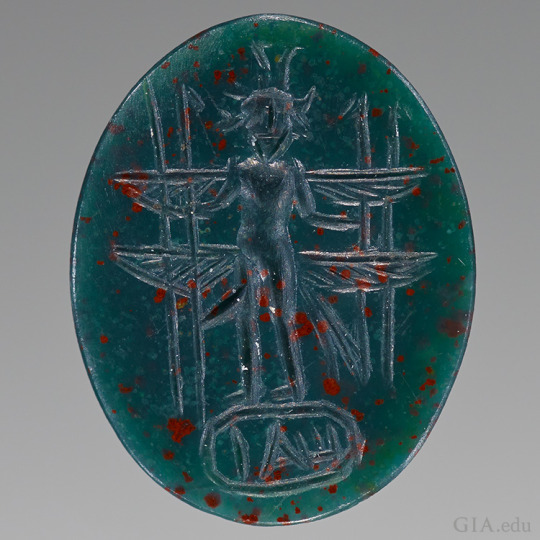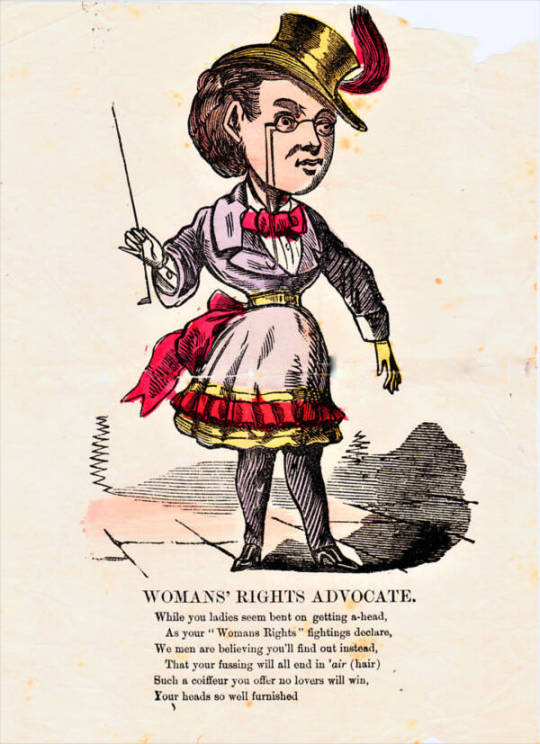feeling cute. might write some stories, might fuck around and find out. An avid collector of old superstitions, folklore and dusty stories. Sometimes I write my own. Working on having a cottagecore life in a rented apartment. Well passed the age of consent no matter what country is asking.
Don't wanna be here? Send us removal request.
Text
youtube
Happy Year of the Snake
#ani#youtube#lunar new year#chinese new year#year of the snake#folklore#traditions#new year#celebrations#Youtube
2 notes
·
View notes
Text
Victorian Etiquette
youtube
as over the top as the British Victorians seems to us when we look back at the myriad of rules for every aspect of society, it turns out there's a strange logic to it. By the end of the video, I was starting to think maybe our current society could use a few books about how to navigate interactions in modern times.
3 notes
·
View notes
Video
youtube
If you’ve been following me for a while, you know I love digging into where old nursery rhymes come from. I’ve covered London Bridge is Falling Down(not as creepy as thought) and Peter Peter Pumpkin Eater (SO much creepier than thought!). Now, one of my favorite narrators on YouTube, tackles the dark beginnings of several other nursery rhymes. Children’s history is darker than we often realize.
#youtube#well I never#folklore#fairy#fairy tales#nursery rhymes#history#dark nursery rhymes#mother goose#nursery rhymes origins#childrens nursery rhymes
1 note
·
View note
Video
youtube
A supernatural gift? Or simply a relic so old that everyone’s forgotten where it came from? However you chose to look at the Fairy Flag of Clan MacLeod of Scotland, its a mystery from the shadows of ancient history. It’s been waved twice so far - it has one last unfurled miracle left. What is it being held back to ward off in the future dark enough to need fae magic to save us from?
#youtube#folklore#scotland#macleod#clan macleod#fairy flag#fairy#fae#dark5 ancient mysteries#mystery#supernatural#highland#yeah I couldn't resist that last tag#not the least bit sorry#always#okay to reblog#and add your thoughts to#superstition
3 notes
·
View notes
Text
Americana Gothic
youtube
#folklore#superstition#gothic#americana#southern gothic#midwestern gothic#new england gothic#connor mcgrath#youtube#wendigo#dark americana#Youtube
7 notes
·
View notes
Text
bloodstone

I wasn't aware before I started poking around but apparently March babies have one of the most METAL birthstones I've ever heard of.
There's the more standard birthstone which is the Aquamarine.
And then there's the Bloodstone.
Because March doesn't do anything by halves.
Bloodstones are officially called heliotrope, a word that comes form ancient Greek meaning 'to turn the sun'. In fact, in ancient times, there was a belief that submerging a bloodstone in water would actually turn the sun red in response. Or perhaps that it just turned the stone blood red, like the sun, when those rays reflected off of it. Bloodstones are a type of cryptocrystalline quartz, which means that the quartz crystals that make up the stone are so small that even with a microscope they're hard to see. As such, bloodstones can be either opaque or transparent. The most popular form however is a dark green stone with red specks throughout. The red is hermatite which is an iron oxide compound.
Remember that.
Back to the story - obviously with a name like that and a long history of being around, the bloodstone is going to have some superstitions that go with it. Let's dive in.
The bloodstone has been used both to carve seals on and as amulets from ancient times. The red of it was said to represent blood and thus it was considered good for health and strength, making it a favorite with athletes and soldiers. It was also supposed to help with blood issues. For instance the Romans believed that pressing a cold bloodstone to a wound would help staunch the bleeding. Remember the iron oxide in bloodstones - well, it turns out the Romans weren't entirely wrong. Iron oxide is an astringent. This same belief is found in India as well. Pliny the Elder wrote that magicians used the stone to turn themselves invisible. Ancient Greeks and then Romans believed that wearing the stone would make people more likely to grant you favors and it was said to open doors for its wearer. The Assyrians and Babylonians used bloodstones to make their signet rings and seals. During the Middle Ages, Albertus Magnus, also known as St. Albert the Great, and well known for his studies of Aristotle, even called the gem 'the stone of Babylon' in his writings and said it was known to have several magical properties from Antiquities. The prominent belief in the Middle Ages however, was that the drops of red were the blood of Christ, falling from him while he hung on the cross to stain the stone underneath. Because of this it is sometimes called Christ's Stone or the Martyr's Stone. The Gales in Scotland believed the red drops were also blood that had fallen on the stones but they believed the blood came from the 'Nimble Ones', giants that fought across the sky at night.
Associated with March, and the god of war that the month is named after, the bloodstone is thought to bestow vitality and bravery. It is also said to promote good health and longevity as well as good fortune and wealth. Anyone with legal matters going on should wear one to bring favor to their cause, prevent deception and bring them victory. Bloodstones are supposed to allow their wearer to summon storms or grant them protection from lightning. They can supposedly be used as an antivenom to snake bites as well as to cure tumors. The Gnostics believed the gem could strengthen the stomach and alleviate melancholy and the Middle Ages believed it could help with animal husbandry.
And lastly, in modern times, in some Asian countries like India, its believed that swallowing the ground up stone will help with blood circulation, hence making it a powerful aphrodisiac for its ability to increase blood flow. Because of this, jewelers say it is hard to find high quality stones on the market these days.

6 notes
·
View notes
Text
st. patrick's day

Saint Patrick's Day! Green beer, green clothes, parades and corned beef and cabbage for all! In America, we have a lot of traditions associated with St. Pat's Day and a pleasure in celebrating them whether we're Irish or not - heck, even whether we understand them or not.
So let's take a look at some of the ways we celebrate and what we get wrong - and right.
To start with the man himself, Saint Patrick wasn't Irish. Patrick grew up on the Britain side of things. This doesn't make him British however. At the time, the Isle of Britain was run, mostly, by the Romans and letters from Patrick that have survived see him not only writing them in Latin but signing them as Patricius. Whether he was Roman by birth is still a mystery to this day but his family is believed to have been part of the Roman aristocracy. At sixteen, he was kidnapped and ended up in slavery as a shepherd in Ireland before eventually escaping back to Britain. After receiving training however, he returned to Ireland as a missionary and the rest is - well, not history but certainly lore.
There's some speculation, in fact, that the Saint Patrick of myth was actually two men. Saint Patrick the escaped slave and a bishop sent by Pope Celestine in 431 named Palladius to support the 'Irish believing in Christ' that already lived there.
Did he, or they, at least drive out the snakes? Legend says that St. Patrick drove all the snakes out of Ireland and the island has been slither free since. The truth is - according to fossil records, Ireland never had any snakes to drive out. Ireland was under an ice sheet up until the last glacial period and after that it was safely surrounded by water. To save a little bit of the story, some historians believe 'driving out the snakes' was more of a metaphor for driving out the pagan religions of that time instead.
But we totally wear green to avoid getting pinched! Right? Actually - yes. Though the pinching is supposed to come from mischievous leprechauns, not your over-enthusiastic siblings. Apparently, leprechauns can't see you if you're wearing green and therefore, they can't pinch what they can't see. Given our decorations featuring the little people dressed all in green, you'd think that would make it hard for them to find each other but - not really. You see, traditionally - leprechauns wore red.
The pot of gold, sometimes at the end of the rainbow though - that's real(ish).
So is the leprechauns' strange blind spot with green why everything's green on St. Pat's Day? Not really. Green is associated with Ireland, the Emerald Isle, these days but for most of its history, Ireland, and St. Patrick's, color - was blue. Green recently came into prominence during Ireland's struggle with England. Green came to be associated with the Irish side of things and wearing green was a way to show which side of that you were on. The green beer/food though? That's entirely an American thing.
Speaking of green beer, the drinking is an American thing as well. Or, at least, the 'this is a traditional part of the holiday'. In Ireland, Saint Patrick's Day has long been a Catholic religious holiday - and it also happens to fall in the middle of Lent. Originally, the day had a lot more to do with going to church than to the local pub. Which isn't to say no one in Ireland celebrates the holiday with a drink. 'Drowning the shamrock' involved pouring whiskey over a shamrock in the bottom of a glass. The whiskey is then drunk and the soaked plant is thrown over your left shoulder to complete the tradition - and get you some extra luck.
Shamrocks being considered lucky is a part of the holiday. Called 'seamroy' by the ancient Celts, the shamrock was considered a sacred plant. St. Patrick was also supposed to have used the three leaves of the plant to explain the Trinity during his sermons. Like the clover, finding a four leaf shamrock is good luck and five leaves promises a future of vast wealth!
So, yes, a lot of our St. Pat's Day traditions aren't exactly... traditional. Don't discount them or their importance however. Many of the ways we celebrate St. Patrick's Day today are the direct results of Irish immigrants to America. The parades, the corned beef and cabbage, the celebration of Irish traditions - those were all created in the mid to late 1800s by Irish Americans that wanted to celebrate their heritage. So don't feel bad for indulging in a day of parties and eating your favorite food.
Just remember to cut a cross in your soda buns to 'let the devil out' before putting them in the oven to bake for the holiday.

#st. patricks day#saint patrick day#folklore#superstition#wearing the green#irish#irish history#st patrick#ireland
17 notes
·
View notes
Text
ides of march

well, its tumblr's favorite holiday and who can blame us? The assassination of Julius Caesar is probably one of the only group projects that ever went down the way it was supposed to with, well, not complete group participation (there were said to be upward of 60 people involved but only 23 stab wounds - obviously someone was not carrying their weight) but at least a good effort was made at it. But lets take a moment, between our jokes about salad and Animal Crossing butterfly nets to look at what else has happened in history on the Ides of March. For instance, did you know, on March 15th:
1493 - Columbus returned to Spain after 'discovering' the new world.
1580 - Phillip II of Spain put a bounty on the head of Prince William I of Orange for 25,000 gold coins for leading the Dutch revolt against the Spanish Hamburgs
1744 - King Louis XV of France declares war on Britain
1767 - Andrew Jackson, who would go on to be the seventh president of the US, was born.
1820 - Maine became the 23rd state in the US
1864 - the Red River Campaign, called 'One damn blunder from beginning to end' started for the Union Forces in the American Civil War
1889 - a typhoon in Apia Harbor, Samoa sinks 6 US and German warships, killing 200
1917 - Czar Nicholas II abdicated the Russian throne, bringing an end to the Romanov dynasty
1955 - the first self-guided missile is introduced by the US Air Force
1965 - TGI Friday's opens its first restaurant in New York City
1991 - in LA, four police officers are brought up on charges for the beating of Rodney King
2018 - Toys R Us announces it will be closing all its stores
2019 - a terrorist attacks two mosques in Christchurch, New Zealand, killing 51, and wounding 50 others
Oof! Pretty bleak, isn't it? It would almost make you think that the day is just bad luck, start to finish and its probably just as well, we're all focusing on assassination instead of other horrors. But wait - its not all bad news! The Ides of March has some tricks up its sleeve yet (joke intended). I'd be telling you only half the story if I didn't add:
1854 - Emil von Behring is born and will eventually become the first to receive the Nobel Prize in medicine for his discovery of a diphtheria antitoxin, being called 'the children's savoir' for the lives it saves
1867 - Michigan is the first state to use property tax to support a university
1868 - the Cincinnati Red Stockings have ten salaried players, making them the first professional baseball team in the US
1887 - Michigan has the first salaried fish and game warden
1892 - the first automatic ballot voting machine is unveiled in New York City
1907 - Finland gives women the right to vote, becoming the first to do so in Europe
1933 - Ruth Bader Ginsberg is born and will go on to become a US Supreme Court justice
1934 - the 5$ a day wage was introduced by Henry Ford, forcing other companies to raise their wages as well or lose their workers
1937 - the first state sponsored contraceptive clinic in the US opens in Raleigh, North Carolina
1946 - the British Prime minister recognizes India's independence
1947 - the US Navy has its first black commissioned officer, John Lee
1949 - clothes rationing ends in Britain, four years after the end of WWII
1960 - ten nations meet in Geneva for disarmament talks
1968 - the Dioceses of Rome says it will not ban 'rock and roll' from being played during mass but that it deplores the practice - also in 1968, LIFE magazine titles Jimi Hendrix 'the most spectacular guitarist in the world'
1971 - ARPANET, the precursor of the modern day internet, sees its first forum
1984 - Tanzanian adopts a constitution
1985 - symbolics.com, the first internet domain name, is registered
The Ides of March turns out to just be a day, like any other day in history.
Unless you're us. In which case -

#ides of march#happy ides of march#julius caesar#today in history#please take some of my 'bad' dates as tongue in cheek#we love you maine#and a few of my dates fit both the good and bad side of the things so I just went with whichever I was on at the time#feel free to wiggle them around to a more appropriate column
14 notes
·
View notes
Text
leap year

The years go by and the world turns and time moves on. Yet - once every four years - we get to do a little bit of a reset to put things back in balance. Not a bad idea on a less meta level either. In a perfect world, leap day would be a time to rest, relax and recharge. In our world its just another Thursday. But it wasn't always that way and humanity has come up with plenty of ways to mark Leap Day as different from all its brothers and sisters on the calendar.
Let's start with possibly the most well-known. Every four years, on Leap Day, women are allowed to switch rolls and propose to men! Which, granted, isn't as exciting these days when the answer is 'duh' but was back in 5th century when it got started in Ireland. Saint Brigid, so the legend goes, saw too many women stuck waiting on their beaus to propose to them so she had a talk with Saint Patrick about it and it was decided that, every Leap Day, women could turn the customary on its head and do the proposing, something that was referred to as Ladies Privilege. This turned out to be such a popular solution that it spread across much of Northern Europe. Queen Margaret of Scotland made Ladies Privilege into law in 1288 with the stipend that the proposing woman had to wear a red petticoat while she did. The tradition lasted too. In a toned down version, some places in the US still have a Sadie Hawkins Dance on February 29th in which the girls are expected to ask the boys to dance.
Back to the marriage bit though, it could get expensive to turn down a proposing lady! The gentleman was required to give money or a gift to the lady he was refusing. This usually took the form of clothing but one man is recorded as having to juggle on Easter Sunday. In Denmark the fine was twelve pairs of gloves to cover her ringless hand and in Finland it was enough cloth for her to make a skirt from. If the woman's proposal is accepted however, don't set the date any time soon. In Greece and the Ukraine its considered bad luck to wed in a Leap Year and anyone that does is supposedly doomed to an unhappy marriage or even the death of their spouse.
That's not the only bad luck associated with Leap Day. For the Romans, February was the month of the Dead and an extra day just mean even more of that to go around. A German saying goes that 'Leap Year will be a cold year' and in Scotland 'Leap Year will never be a good sheep year'. People born on Leap Day are called 'leaplings' and are said to be set for a life of difficulty in Scotland (only getting a cake and presents every four years can be hard on a person).
In the US however, leaplings are invited to join in a four-day party that takes place in the town of Anthony, on the border of Texas and New Mexico each Leap Year. The festival has gotten so big that leaplings come from around the world these days to join the party.
Leap year is also lucky if you're a whale - thanks to the old folklore that whales only give birth in a leap year (at least that's according to Buzzfeed so take that as you will).
Leap year is considered a dangerous year for the elderly in Taiwan as they're considered much more likely to die during that time. In response, on Leap Day, most daughters will make a special visit to their parent's home to cook pig trotters, which are supposed to help with long life and health.
And lastly, in 1980, La Bougie du Sapeur launched its first newspaper run in France. La Bougie du Sapeur only publishes once every four years. On Leap Day. This year you'll finally get the answers to the crossword puzzle it ran back in 2020.

10 notes
·
View notes
Text
butterflies

I was not aware, when I started digging around on the internet, just how MANY superstitions there are when it comes to butterflies.
A lot. There are a LOT.
So I'm going to try to catch some of them here - gently and only for a moment - but please be aware that there are many more I am simply going to miss. The world is full of butterflies and their stories and so we can only find so many before our story runs out.
The ancient Greek word for butterfly was psyche. Psyche was also their word for 'soul'. The thought was that, symbolically, the caterpillar dies when it enters its cocoon and the butterfly is its soul once it emerges. To this day, many cultures around the world believe that a butterfly lingering nearby after a death is a sign that the deceased has come back to check on their loved ones. Even without a known death nearby, butterflies are often considered to be carrying the newly released souls of the dead on their wings and it is very bad luck to harm or kill one of them while they are about their business. White butterflies are said to be the souls of children that died too early. In Mexico, migrating Monarch butterflies begin to arrive just as el Dia de Muertos, the Day of the Dead, is taking place and can be viewed as the souls of the land's ancestor's returning to visit. In Mesoamerican culture, the butterfly was the soul of a warrior that had died in battle (women that died during childbirth were counted among these warrior souls). In fact, the butterfly was one of the symbols many of the gods shared. Itzpapalotl was a death goddess known as the Obsidian or Clawed Butterfly of the Aztecs. The butterfly was also one of the symbols of Xiuhtecuhtli, the Aztec god of fire. Butterflies were often associated with fire in quite a few mesoamerican cultures in fact. The idea of a short, brief 'flame' of life that bursts into color and then quickly dies.
Even when they're not ferrying souls, the magic of butterflies carries over. Some Native American tribes say that if you catch a butterfly without hurting it and whisper your wish or prayers to it before releasing it, the butterfly will carry your words directly to the Great Spirit. The Shoshone have a dance called the Fancy Shawl Dance that represents the butterfly's wings and the twirling path of its flight. In Japan, folklore says that if you find a butterfly perched in your guest room, you'll soon receive a visit from the person you love most in the world. In the Appalachian mountains, there's a butterfly that, if you're fast enough to count the spots on its wings, just as much money will come your way. In Louisiana, a butterfly getting into your house means fortune is on its way.
Not all butterfly superstitions are positive however! To see a butterfly flying at night means approaching death. A butterfly with closed wings means bad news is coming since the closed wings are 'hiding' the secret. Seeing three butterflies resting on the same leaf is bad luck and if the first butterfly of the year that you see is yellow, it means there will be sickness -
unless you're Zuni, in which case it simply means there is bright, sunny weather ahead.
The Russian word for butterfly is babochka, which means 'little old woman' since there's a belief that butterflies are actually witches in disguise. In Ireland, the butterfly can easily pass back and forth between worlds. And finally, in Devon, England, you must kill the first butterfly you see in the new year or all the rest of that year will be bad luck.
Just be aware, in most other cultures, killing a butterfly is what brings on the bad luck.

16 notes
·
View notes
Text
violets

February is the smallest month and often the least favorite of some people. In the Northern hemisphere it balances the line between the grey winter months and the raucous spring ones that will follow. But being a little month caught between louder ones does not mean February isn't hiding its own sparkles of magic with a holiday dedicated to emotion and an extra day up its sleeve every four years. So its only fitting that one of the birth flowers for this month is the indomitable violet.
How long has the violet's magic been around? Well - we could ask Sappho, the ancient Greek poet whos work was so well-known and admired that she was sometimes called 'the tenth Muse'. She mentions her lover wearing wreaths of violets and in a different poem a crown of them. Sappho's poems often speak of her romantic love for other women and so the violet often does too. In 1926, one of the first modern plays to depict the love between two lesbians, La Prisonnière, used a bouquet of violets to signal their relationship.
Most violets are edible and so they were (and still are) added to an array of foods and drinks. Modern France is known for its violet syrup. Eating this flower goes back to antiquity in fact. Ancient Persians thought violets were calming and could sooth away headaches. The Greeks, and therefor the Romans, believed violets were good for fertility and made love potions with them. In fact, Athens was known as the 'City of Violets' for its abundance of them.
The idea of violets and love carried over too. The very same Saint Valentine, who happens to have a holiday named for him in this month, is said to have ground up violet petals in order to make the ink he wrote his letters with.
In medieval European art, the violet is often shown in paintings with the Virgin Mary. Because it grows close to the ground with a lowered flower head despite its royal color, it represents modesty and humility.
In Victorian times, the purple violet represented modesty, faithfulness and fortune. Folklore said wearing violets in your hair could help you combat inebriation. Carrying violets could ward off evil spirits too (perhaps because sickness was still thought to be caused by evil smells and many violets are very fragrant). Make sure you carry a lot of violets when you do carry them however. Another English superstition said that carrying less than a full handful of the flowers in to the house lead to bad luck and a single violet would be the death of all the ducklings and chicks on the farm! If violets bloomed in the autumn, whoever owned the land they bloomed on would experience a death in the family (there are flowers in the violet family that do this often however so fear no harm on this account).
These days the sweet violet is the symbol for consistency in the UK. In Australia and New Zealand, violets were sold on 'Violet Day' (the date of which varied from year to year) to help raise money to commemorate the dead soldiers from World War I. The violet is the state flower of New Jersey, Illinois, Wisconsin and Rhode Island. The humble little flower is also being tested for medicinal uses in modern medicine.
So you see, like February and February babies, this little flower packs quite a punch.

#violet#herbology#the language of flowers#february#birth flower#st valentine#cottagecore#folklore#superstition#herbalism#love potion#victorian
28 notes
·
View notes
Text
vinegar valentines
It's February 14th, Valentine's Day, and love is in the air. Today is the day to send flowers, share chocolates and, perhaps most famous of all, to find the perfect card to express your deepest feelings to the ones who have been on your mind forever.
Welcome to yet another tradition of the Victorian era that lasted from the 1840s to the 1940s.

That's right, for the price of only a penny, you could send scathing 'valentines' to the people you felt deserved it. Some friends took advantage of this to send joking cuts to their fellows. Most Victorians took it a bit more seriously however.

The nicknamed 'vinegar valentines' were usually printed like postcards, single-side on cheap paper and could be sent through the mail. There were occasions when a postmaster or mail carrier would refuse to deliver them but that was rare.

Anyone that didn't fit into society's expectations of the time was subject to them, bullying through the mail long before doing it online was available.

Granted, sending the valentines was often considered outside of polite society too, so most of these cards were sent anonymously. One would hate to get a 'valentine' of their own for being catty.

Eventually, the tradition fell out of favor and then out of the public's memory. These days any salty valentines we send to our friends are usually done in good humor.
The anonymous ridicule is saved for online.

#valentines#valentines day#valentines cards#vinegar valentine#happy valentine's day#victorian era#cards#hate mail#just remember#love comes in many forms#today is the perfect day to share it with all the many ways you love others
24 notes
·
View notes
Text
lunar new year foods

In the last Chinese New Year post we talked about some of the traditions that accompany the new year's celebrations. We did not, by any means, cover all of them. A quarter of the world's population celebrate the Spring Festival and that's a lot of room for a lot of different traditions. For this post, I'd like to talk about some of the dishes eaten for the festival that have meanings that go a little deeper than simply being tasty, though they are that as well. I am not going to be able to mention all of them so I hope that everyone feels absolutely free to include them in the notes, tags or reblogs.
One can never have too many delicious food suggestions.
Let's start off with a familiar one. In many parts of Northern China, dumplings are front and center when it comes to meals. This is because the Chinese symbol for dumpling 饺子 sounds like 交子. 交 means 'exchange' and 子 is 'midnight'. So this play on word-sounds means to exchange the old with the new at midnight. In some areas the stuffing in the dumplings needs to be egg for prosperity in the coming year. The dumpling itself is reminiscent of silver ingots and the egg therefor adds gold to things as well. Alternately, you can add meat and bamboo strips which will make sure that everything you will need in the coming year will come your way. Don't use anything pickled however as this might lead to a difficult future. And lastly, don't forget to add a coin or a long thread to one of the dumplings. Whoever is lucky enough to find the coin will have good fortune and the thread is for long life (as long as no one chokes on it!).
Don't forget the fish either. The symbol for fish sounds a great deal like the symbol for 'extra'. Make sure to eat the middle of the fish but not the head or the tail. This will help you finish everything you start, from 'head to toe (well, tail)' so to speak. Also you shouldn't eat the whole fish in one sitting. Stretch it out into two meals so that your prosperity and extra will stretch out for the whole year as well. Have a business you want to thrive? Add red peppers to the cooking fish. Not only is red a lucky color, the spiciness of the meal will lead to a lively future for your business as well.
Nian gao is a must. Originally reserved for the gods and ancestors as offerings, these rice cakes have since become a tasty treat for everyone. Gao sounds like the word for 'higher'. Hence, if you want to go higher in the new year, you've got a very good reason to tuck into these delicious cakes.
You also want to keep an eye out for turnip cakes. They're made of shredded Chinese radish. 'Radish' sounds similar to 'good luck and fortune' so this is a tasty way to bring exactly that into the new year. These cakes are especially popular on the seventh day of the festival as a reminder that the goddess Nu Wa created humans on the seventh day.
Don't turn up your nose at unprepared food either. Oranges, kumquats and tangerines have a golden color that is sure to bring in prosperity in the coming year. Peaches will bring longevity and health. Muskmelon and grapefruit symbolize family and hope. And if you want a large family, start eating pomegranates.

#chinese new year#lunar new year#spring festival#year of the dragon#dumplings#fish#nian gao#turnip cake#folklore#superstition#word play
12 notes
·
View notes
Text
widdershins wednesday

The inventor of Coca-Cola, John Stith Pemberton, created the original recipe because he was addicted to morphine thanks to the chronic pain he was in due to a wound he'd received fighting on the Confederate side during the Civil War.
Because a drink made with cocaine is absolutely A way to combat morphine addiction.
27 notes
·
View notes
Text
Chinese New Year

What's better than one new year's celebration?
TWO new year's celebrations!
While most of the Western world marked the beginning of the new year on January 1st, most of Asia celebrates the the Chinese New Year, also known as the Spring Festival or the Lunar New Year, that can fall anywhere from January 21st to February 20th. The reason the new year falls on different days is because it uses the lunar calendar that marks holidays not by set days but by stages of the moon. This year the new year will fall on the 10th of February. An estimated quarter of the world's population celebrates this new year. Are you ready to celebrate too?
The first thing to know is that, if you're celebrating the new year traditionally, most businesses will be shut down, usually for at least a week, sometimes more. Not only does this give everyone plenty of time to prepare and celebrate the days of the new year, it also gives people time to go home to visit their relatives. The Lunar New Year is the cause of the largest annual migration of humanity each year. Family is a large part of the celebration and that includes the dead as well as the living. Graves are visited, offerings are made, memories are shared. On New Year's Eve a family reunion dinner is held, with family coming from far and wide to gather together to welcome in the new year. There's plenty to do for people who can't visit family as well because visiting friends is an important part of the holiday. And lets not forget the festivals themselves with delicious treats, fireworks, dragon and lion dances and floating lanterns. This is the biggest celebration of the year and there's no doing things by halves.
Let's talk about some of the traditions and folklore of the celebration.
First off, the legend is that the new year is celebrated the way it is because, long ago, there was a monster called the Nian that would come out every new year's eve to hunt and devour helpless villagers, creating destruction wherever it went. The Nian had a special fondness for the taste of children too. Finally, one year, everyone decided to hide from the beast. As they were gathering to leave, an old man approached them and said that he would stay behind while they hid and he would get their revenge on the monster when it came. While they were away, the old man hung up red papers in the windows of the village and set off firecrackers during the night. When the villagers returned, their village was unharmed but the old man had disappeared. Realizing that he was a deity that had come to help them and show them the way to defeat the Nian, the grateful villagers followed his example and hence the tradition of firecrackers and the brilliant color red became a tradition.
In some stories, its a brave boy that sets off firecrackers to drive away the Nian instead of an old man. In others, its an old beggar that a poor woman gives shelter to for the night.
No matter the story, firecrackers are still set off during the new year's festival, their loud sounds thought to drive off evil and to welcome in good luck. They're set off again during the Lantern Festival that ends the New Year festivities.
Red is still used everywhere too. It's the color of prosperity and energy, driving off the negative. Evenly paired couplets like:
Yīfānfēngshùn niánnián hǎo, wànshìrúyì bùbù gāo
"Smooth sailing with each year; success with each step."
are hung or painted on double doors or to either side of them in red as even numbers (the characters of the couplet that match length on both sides of the divide) are considered lucky as well as warding off evil spirits. Sometimes pictures of gods or heroes are hung in pairs on doors for the same reason. Red lanterns get hung up and much like some people cut snowflakes out of paper, symbols for luck, prosperity and health in the new year are cut out of red paper and hung on windows. There are even red diamond paper decorations with the Chinese character 福 (fú /foo) hung so the symbol is upside down. This is because 福 means luck and when it is upside down over a door the luck pours out over the entire household.
If you want to keep that luck in your house, make sure you do a full spring cleaning just before the new year. This will sweep all the bad fortune out and have your house ready for new blessings to come in. Once the new year arrives though, don't wash yourself the first day. You don't want to wash all that good luck down the drain. For the same reason, there's no cleaning, and especially no sweeping or throwing out trash, until after the fifth day of the celebration. You want to start the new year the way you want it to go on. As such, don't get into fights, say negative words, swear or try to rush people around. Don't use sharp objects like scissors because it will cut off your good luck; for the same reason, don't cut your hair either. Treat yourself to new clothes for the festival, red is best, avoid black and white which have unlucky connotations. Don't buy shoes as the word for shoes sounds a lot like 'evil' or 'bad luck'.
Don't forget the red pockets either! These are red envelopes with money in them. Elderly family give them to the younger generation as a way to symbolically pass on their wealth and blessing and the younger generation gives them to their elders to show appreciation and wish them prosperity and longevity. These are so standard that there are even phone apps these days so you can give them electronically. Remember, an even amount of money is lucky so don't give out an odd one.
And let's not forget the Chinese zodiac. The upcoming new year will be the Year of the Green Wood Dragon. The dragon represents power, success, honor and luck and will bring a creative and auspicious year of progress. People who were born in the year of the dragon however should be careful to wear red underwear every day of the year to keep bad luck from settling on them. And, if you can, be sure to watch the dragon (and lion!) dances as these too chase away the bad and bring in the good with them!

#chinese new year#lunar new year#spring festival#year of the dragon#folklore#superstition#nian#lion dance#dragon#there was really too much to fit into one post#I may do another post for food and the lantern festival#and we didn't even get into the kitchen god
26 notes
·
View notes
Text
Porphyrios

Since 2020 there have been over 400 run-ins with orca whales off the coast of Spain. So far, they've sunk at least three ships and damaged dozens more. A ship's skipper, Daniel Kriz, who has had the orcas damage rudders on two different boats he's been on, says they're getting better at it too.
“In 2020, the attack lasted almost an hour and was not as organized,” Kriz said. “This time we could hear them communicating under the boat. It only took about 10 to 15 minutes.”
Why are whales suddenly going after boats with such determination and for such a long span of time? Scientists are unsure, leaning between the whales retaliating for harm a ship did them previously or simply becoming brave enough in their curiosity to unintentionally damage ships. Perhaps I am a bit too influenced by stories I've read but I would tend to believe the orcas know exactly what they're doing.
I also know this isn't the first time a whale has attacked, or sunk, a ship.
Perhaps the most modern famous one is the sperm whale that sunk the whaling vessel Essex in 1820, an incident that inspired Herman Melville to write Moby Dick in 1851.
But we can go further back than that.
Much further.
Let's go back to sixth century Constantinople. According to Procopius, a historian of the time from Caesarea, a great whale, 45 feet (13.7 meters) long and fifteen feet (4.6 meters) wide haunted the Strait of Bosporus and the waters around it. This whale wasn't just there to sight-see either. The whale attacked and sank ships it came across.
The sailors of the time named the monster Porphyrios.
There's debate what the name was derived from (other than the gut kick reaction to shout 'oh shit!' the second you saw the whale hove into view) but most scholars think the whale's name came from prophyra which meant a deep, purple color. This could have been referring to the color of the whale's skin or perhaps imbuing it with some of the terrifying, regal nature that nobles of the time, the only ones allowed to wear the purple, implied. Whales weren't well known in that area of the world at that time and we have no way of knowing what kind of whale it was. Speculation based on size leads many to believe it was a lost sperm whale a long way from home but it might have also been a large orca. Iberian orcas hunt the Straight of Gibraltar, following the bluefine tuna every year and they're the ones responsible for the recent ship attacks off the coast of Spain of the past few years. It's not hard to imagine one of them wandering east, deeper into the Mediterranean Sea, instead of heading back north when the tuna left. And Porphyrios didn't just set up shop anywhere. He decided that the Strait of Bosporus was his new hunting ground.
Here's the thing. The Strait of Bosporus was the main trade route for that part of the world. Goods flowed down to the Black Sea, crept through the narrow Strait of Bosporus which let out into the Sea of Marmara. One more strait, this one the Dardanelles, where the city of ancient Troy once controlled all trade out of the East, and then it was out into the Aegean Sea and then on to the Mediterranean. Trade goods could pass by on land but it added both dangers and time to the business and, most importantly, took all that sweet, sweet toll to use their water passage right out of Constantinople's hands. Having what amounted to a sea monster living in their main money-maker and convincing merchants to find other ways to bypass the strait, and therefor the city sitting on the edge of it, was disastrous for a country that was trying to restore itself to its former glory. Emperor Justinian I, also known as the Great, put out a bounty on the monster's head and did everything in his power to encourage its capture or eradication.
The tools of whaling used centuries later to drive many whale populations to the brink of extinction however were unknown at the time. Porphyrios shrugged off the arrows and spears lobbed at it and went on sinking ships, sending simple fishing vessels to the bottom of the ocean just as steadily as it did merchant and war ships. There was even a story that Justinian's famous general, Belisarius, loaded a catapult onto a ship to hunt the deadly whale, though this seems to be just a story and one which also failed to killed the great monster of the strait.
Porphyrios becoming a terror that merchant captains probably saw in their nightmares even when they were on dry land. Long routes far out of the way were taken to avoid waters he swam in. There would be lulls. For unknown reasons, Porphyrios would disappear for long periods of time, lulling ship captains and their crews into thoughts that the monster had died. It never lasted though and for over fifty years, Porphyrios hunted the ships of the Bosporus and its surrounding waters, damaging some and sending many more to the bottom of the ocean.
Nothing lasts forever though. One day, the story goes, Porphyrios was chasing dolphins in the Black Sea and ran aground. Struggling to get back to deeper water, it only churned up the dirt, sinking itself more completely into the mud. Locals that lived nearby saw what was happening and ran out to kill the great beast but their axes did little damage against its tough hide. In the end, they lashed ropes to to the whale and, using horses and wagons, dragged its great bulk to higher ground. There they finally managed to kill the beast, eventually hacking it to bits and eating the pieces. Porphyrios, killer of men and sinker of ships, terror of the Bosporus, was no more.
It was the first recorded case of a whale attacking ships.
It hasn't been the last.
Perhaps the Iberian orca, social animals that can teach each other how to disable and sink ships, tell stories, late at night when they rest in the waters off the coast of Spain, with the bright lights from the shore twinkling above the water like electric stars. Perhaps they tell stories of an ancestor who hunted strange waters -
and taught the humans in their noisy ships above what real fear was.

#porphyrios#whale#whales#orca#sea monster#history#constantinople#justinian#killer whales#orcas#turkey#bosporus strait
15 notes
·
View notes
Text
widdershins wednesday
Victorian England had to deal with, among other things -
exploding toilets.
Methane gas would build up in the sewers and then leak upward into homes.
All it took was one lit candle.

#widdershins#widdershins wednesday#plumbing#victorian#victorian era#exploding toilet#hardcore cottagecore
8 notes
·
View notes